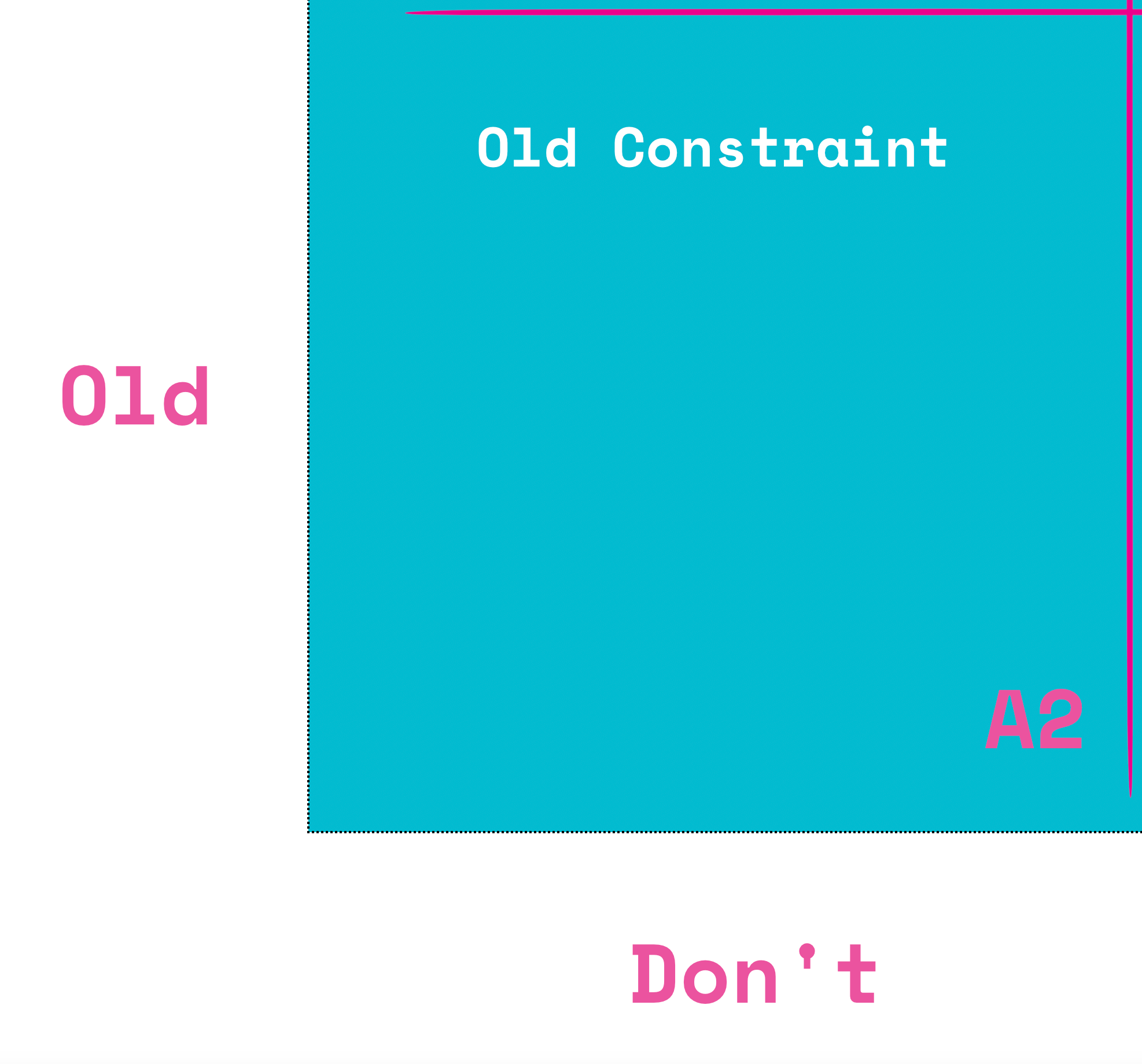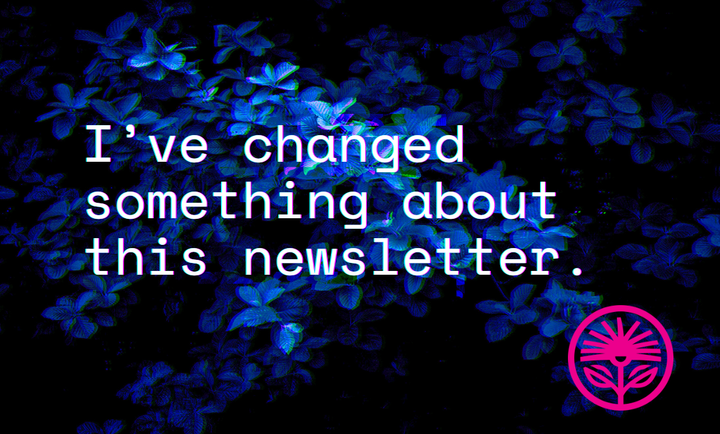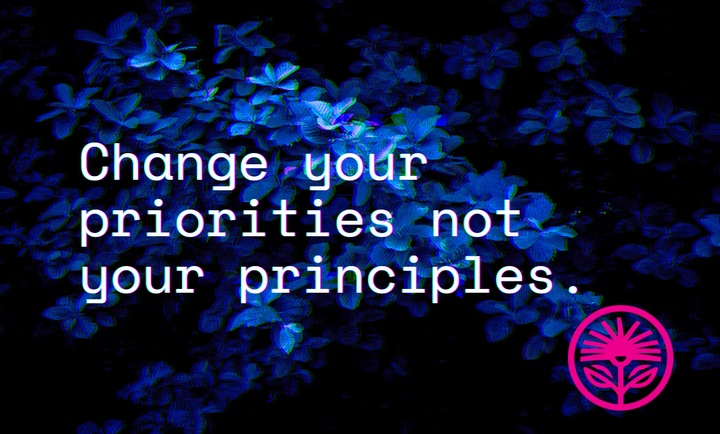Framework: The Opposite Opportunity
Benefit from the latest trend without blending in.

The Concept, Quickly
- Identify what the new trend, tool, or technology enables not just what it does
- Cast yourself forward in time and imagine what old constraint that new ability will remove
- Then, uncover a new opportunity that the opposite of the new trend and the removal of the old constraint provides
- Finally, apply timeless marketing techniques to demonstrate your value at a distance without blending into the crowd
“In all that elevates man in the improvements of advancing civilization, the last thirty years present greater results than three hundred years preceding. Little then did we dream of the achievements that steam and electricity were to bring about.”
— John D. Hawkins, 1847
“There is nothing new to be discovered in physics now. All that remains is more and more precise measurement.”
— Lord Kelvin, 1900
“The railroads did not stop growing because the need for passenger and freight transportation declined. That grew... They let others take customers away from them because they assumed themselves to be in the railroad business rather than in the transportation business.”
— Theodore Levitt, 1960
“Visionaries see a future of telecommuting workers, interactive libraries and multimedia classrooms. They speak of electronic town meetings and virtual communities. Commerce and business will shift from offices and malls to networks and modems... Baloney.”
— Clifford Stoll, 1995
The below “New Tech, Old Marketing” framework is my attempt to create a repeatable way to think about new technology or trends that both prevents you from ignoring it and from merely following the crowd.
I wanted to provide a new way of thinking about the technology or trend based on timeless techniques for demonstrating value at a distance.
So, this is how I think about things. It’s not a rule nor a law nor an oracle. It’s just a tool.
But it is generative—it does something. It’s not just a filter for ideas, it performs a function, no matter what you put into it.
So, after you use it the first time, take what you learned, adjust your inputs, and go through it again.
Creativity is iterative, and this is creative work—because value is something we create. We don’t discover it, we make it.
And the “New Tech, Old Marketing” framework is my way of doing that.
Let’s dive in:

So, let’s define our terms.
“New”: The thing that’s changed from the previous way of doing things or thinking about things.
“Old”: The way of doing things before the change, trend, or new technology.
“Don’t”: The things we’re not going to do anymore.
“Do”: The new opportunities or actions we’ll take.
Now, let’s run through the framework using the same AI example from last week’s model. But as you go through this with me, think about a new tool, trend, or technique that’s shaking up your working world.
This isn’t about AI in particular, it’s about tech disruptions and trends generally.
A1

So, we start at the top-left with the trend or tech we’re talking about. Here’s the first major note, though: We don’t just mean the name of the technology or the name of the trend. So it’s not “AI,” it's what the AI enables.
Let’s say the business we’re talking about is a graphic designer who specializes in logo design for small businesses.
What I’m going to put into A1, then, is “My clients and competitors are starting to churn out AI-generated graphics instead of doing custom work or having custom design done”.
If we were doing this a couple years ago, we might have put, “All my competitors are rushing to post on TikTok”.
Don’t look for the fact of it, look for the fault of it. What does it do?
TikTok captured everyone’s attention and AI is giving everybody the ability to make design “free,” infinitely.
A2

Now we head down a row to A2, our old constraint.
So, we take what we put into A1 and we think, what old constraint, rule, or best practice does this now negate?
In a world where AI-generated design is free and infinite, the old constraint of “be extremely fast” becomes moot. That’s no longer valuable. So I can put, “Generating designs extremely quickly,” as my old constraint.
If we’d put, “All my competitors are rushing to TikTok,” into A1, we might put, “Keeping up with all my competitors’ content” into A2. That used to be something you did, but now it’s impossible—unless you’re going to spend all your time on TikTok, like they are.
Don’t try to sum up the constraint as a single word or concept. The constraint isn’t “time” or “effort” or “volume.” Make it specific, a real, actual thing you used to have to do (or felt you did) that you no longer have to because of the new tech.
B1

Okay, now we jump up to B1, the new opportunity that the opposite of the trend presents, and which ditching the old constraint allows.
If we used to sell or create designs based on volume, hours, or effort, that’s no longer practical now that AI has dropped the value of that effort to near zero. What people care about is the outcome not the effort, as evidenced by their willingness to use AI in the first place.
But we can still see that lots of competitors are rushing in the race to the bottom of that pit—getting faster and faster and cheaper and cheaper. So what opposite opportunity does that present to us?
Well, the classic “picks and shovels” strategy would be to sell into that crowd, not to join them. Sell them prompts, templates, and grounding data and examples.
But we can think a little deeper and consider the other side of the trend. The robots can mimic, they can reproduce, and they can even do things that appear genuinely original, and they’re just getting better.
But what they can’t be yet is you. They’re the grand average of the internet, but you’re unique.
So what our graphic designer might do is find clients who want affordable high quality design, but want it to be deeply personalized to them. They don’t want the average of the best from DALL-E or Stable Diffusion, they want the value of their experience combined with the value of your expertise.
Our graphic designer, then, might position themselves as the step after you’ve tried AI, when you’re ready for something real, personal, and unique.
Because once everyone’s using the same tool in the same way, specialization, differentiation, and personalization become ever more valuable.
So into this field, we’ll put, “setting the new standard for my ideal clients above the floor of AI and at uniquely personal”.
B2

Finally, what’s an old marketing technique or strategy or perspective that always works?
That can be tough, because so much about marketing is contextual. But let’s see what we have to work with:
We have a trend of churning out AI-generated art and design.
We have an old constraint of selling design based on effort, speed, or volume.
We have an opposite opportunity of setting a new standard that surpasses the floor of AI.
And now we need to think of something that combines those elements and always works.
What always works? Focus. Differentiation. Standing apart from the crowd. Doing less, not more. Demonstrating value.
So if our graphic designer used to make money by being fast, now they can make money by being better than merely fast (AI has that covered) and being powerfully personal.
They’d use their human design skills to take their clients’ attempts at AI design and turn them into powerfully personal pieces that the AI could never create. Not because it didn’t know how to design, but because it didn’t know how to ask the right questions of the client.
But people do. You do.
And so our graphic designer’s marketing could become a video series taking AI art and turning it into powerfully personal design. They could de-position the output of AI generators as nothing more than polished sketches and concepts, not final works ready for the world.
And they’ve kept their cost structure down because they’re still using their quickness as a layer of their expertise, but they’re not losing all their margin keeping up with AI tools, rushing things out the door, or competing on price against something that cost pennies to use.
All while demonstrating their unique value.
Is that a good idea? I don’t know, it certainly requires a lot more thought. But that’s what the framework outputted based on this run-through.
It responds to the trend without ignoring it.
It lifts away an old constraint.
It takes an opposite approach.
And it’s rooted in what’s been known to work throughout history, technology, and trends.
So, how did you do?
What tool, trend, or technology did you take through the framework? Did you run into any confusing areas, or get stumped coming up with any ideas?
Reply to this email or send a note to labs@kelfordinc.com to let me know how you did and if you need any help with it.
Because if you use this framework, you won’t have to worry about what everyone else is doing.
Instead, you might just find an opportunity in the opposite.
How did that work for you? What did the tool output? Share it with me by replying to this email.



